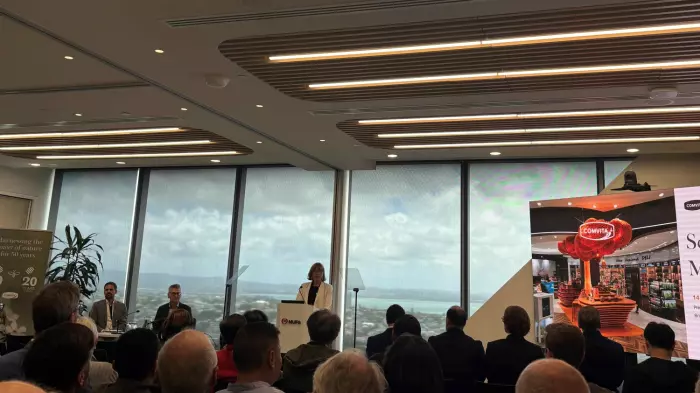As business leaders look to set new operating parameters for their workforces post the pandemic, they have to take staff with them. Previously, workers commuted five days a week without question or choice, but now that they have become accustomed to working productively solely from home, they are looking to their employers to justify a return to a centralised workspace. For businesses, the incentive is the positive change their leaders can communicate – and, fortunately, many are thinking laterally and are open-minded about larger questions of productivity, purpose, connection, and professional advancement. Here are the major trends and themes I am observing as a workspace specialist:
Technology is the enabler, but the workspace is the glue
Especially after the past two years, workers are looking for inclusion and connection. Many people enjoy working from home because technology enables it and a home-based workspace makes elements of life easier, but there is often a sense of disconnection from colleagues and teams. The companies that are managing this contradiction best are those focused on long-term productivity and supporting the new generation entering the workforce, who will need special attention to ensure they get the upskilling that previous generations have taken for granted.
Many leaders, especially in knowledge-based sectors such as the law, are focusing in particular on generational and institutional expertise, pairing graduates with seniors to learn the company and industry; younger folk will leave for competitors if their more established, experienced counterparts do not come to the office to educate, coach and mentor them. The best at doing this have recognised that the workplace is a key component of differentiation in the war for talent.
Be deliberate and organised about setting schedules
As workforces are returning to the office, many businesses and employees want to retain the benefits of flexible working that have accrued over the past two years. Progressive managers are proactively setting rules for teams and providing digital tools for people to connect with each other and manage agendas, so when staff do come to the office, they have maximum opportunity to connect with others in person and to get the best out of the workspace. If the in-office/work-from-home schedule is set well in advance and coordinated between teams, people can have all the respective advantages of working in the office (interpersonal collaboration and conversation, change of scene) and at home (avoiding the commute, quiet, and space to concentrate on deep work).
Change how you think about the office
Post-lockdown, for many businesses and HR executives the “office” is no longer a single centralised location that is occupied five days a week. Leaders are looking to create a network of workspaces where people work one day at a location convenient for some, another day at a different location convenient for others. They are also being creative with the use of space; single workstations in open-plan settings are the least used, and are being replaced with purpose-built facilities for yoga practices or gym equipment, video gaming, or crèches or playrooms for children or pets. Again, this follows the theme of allowing people to bring the best of working from home back into the shared workspace.
In considering the use of space, human-centric design is increasingly important. This aligns workplace design with the work being performed, and away from bums-on-seats for line-of-sight management to spaces that are specifically designed for socialising, learning and collaborating. It is also possible to monitor occupancy in the current space to support future iterations of office space that are suitable for long-term business HR planning and real-estate investment.
Focus on the data and feedback
The companies that want to make the most effective, lasting workspace changes are asking staff to drive the process so they can build data points around what is working and what is not. By asking staff for their ideas, leaders can design a programme and look for the real estate that will support the vision, rather than starting with the real estate and having to adjust the personnel or practice to fit.
For years, many companies have been carrying excess real estate and simply accommodating the resulting cost inefficiencies. They now have an unparalleled opportunity to use the workspace to provide amenities that employees truly want. In doing so they are following the lead of the top 10 companies to work for globally that focus on the workplace as a driver of engagement (such as Facebook, Google, Salesforce), and those locally, including Trade Me, 2degrees, PWC, Jarden, and Chorus.
Think about purpose and sustainability
Workers increasingly want to see evidence of how their companies are operating more responsibly and sustainably, from both a social and climate standpoint. These points go to purpose – why people want to work for a company – as an important driver of happiness at work; 91% of Gen Z workers, for example, put sustainability as their top priority. Companies that are making office moves and communicating the results (ie they can measure and discuss the sustainable impact of their choices of building and interior fit-out processes and materials) will reap the rewards of staff feeling heard and validated.
Treat time and attention as the most valuable elements
These days, people should be “earning the commute”, meaning there needs to be a purpose in travelling to work other than to do the job they can in fact do from home. The commuting time should be justified by learning new skills, getting specialist training, or collective actions such as a sales team getting together to do calling sessions, managers and direct reports working together, coaching or strategy sessions, team-building sessions, special speakers, and so on. When people are together, make it rewarding outside the focus on work. Many businesses that are changing premises are looking for locations that provide amenities, so their staff can use the commute to shop, dine or see a movie or show on “office days”.
Pierre Ferrandon is head of research for Auckland-based Studio DB where he creates strategies for companies to implement hybrid working and optimise the workspace for productivity, profitability and employee engagement. Studio DB is hosting a webinar on 11 May about returning to work.










